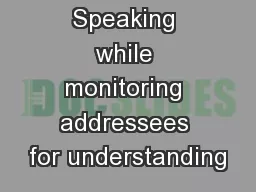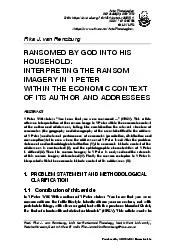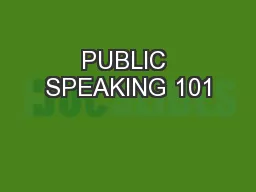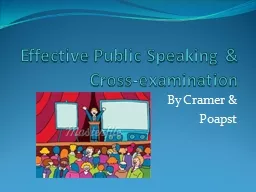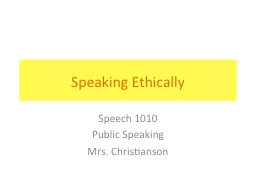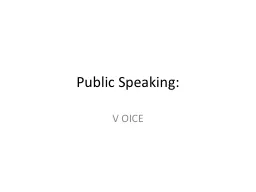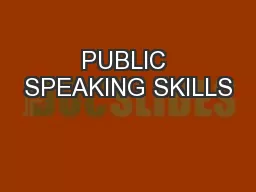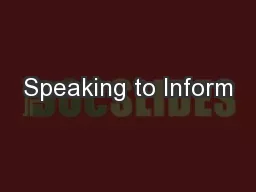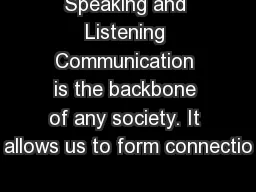PPT-Speaking while monitoring addressees for understanding
Author : pamella-moone | Published Date : 2015-11-22
Torsten Jachmann 16122013 Herbert H Clark and Meredyth A Krych Seminar Gaze as function of instructions and vice versa Research Question Speaking and
Presentation Embed Code
Download Presentation
Download Presentation The PPT/PDF document "Speaking while monitoring addressees for..." is the property of its rightful owner. Permission is granted to download and print the materials on this website for personal, non-commercial use only, and to display it on your personal computer provided you do not modify the materials and that you retain all copyright notices contained in the materials. By downloading content from our website, you accept the terms of this agreement.
Speaking while monitoring addressees for understanding: Transcript
Download Rules Of Document
"Speaking while monitoring addressees for understanding"The content belongs to its owner. You may download and print it for personal use, without modification, and keep all copyright notices. By downloading, you agree to these terms.
Related Documents

